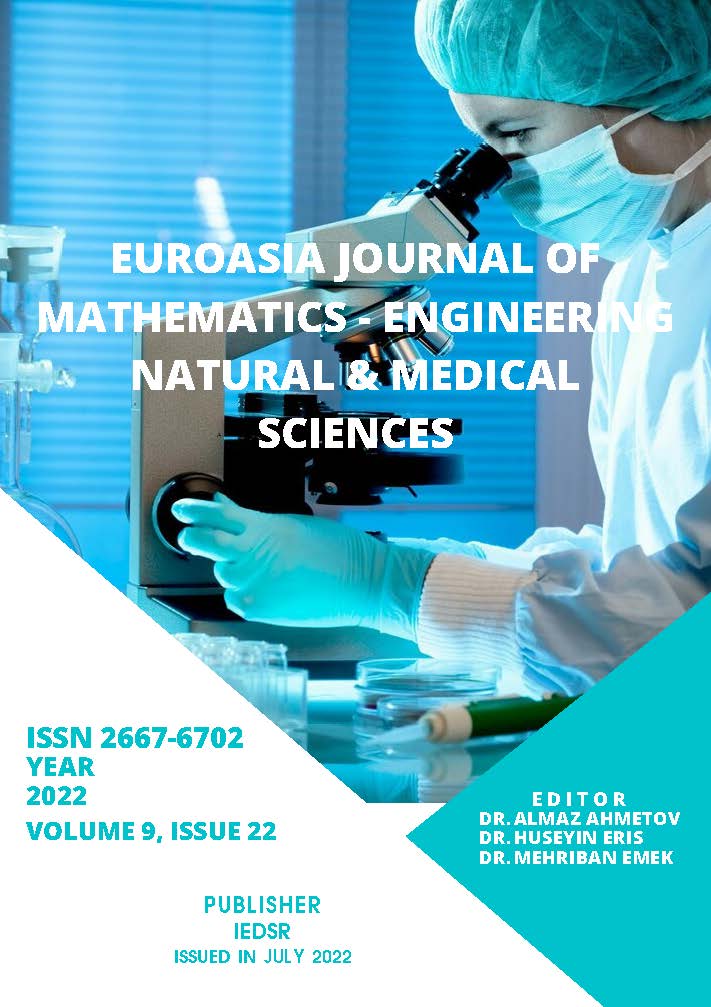The Effect of the Relationship Between Expertise Area and Daily Working Periods in the Levels of Dentistry: The Field Research in Istanbul
DOI:
https://doi.org/10.5281/zenodo.6948437Anahtar Kelimeler:
Dentistry, Questionaire, BurnoutÖzet
In this study, it was aimed to investigate the relationship between the working hours of the health professional groups according to their expert status and the dimension of the burnout of dentists.
In 2018, 532 dentists working in a clinic and working in the public sector were interviewed. A questionnaire regarding the occupational burnout was prepared. The data was collected as a result of the face-to-face interviews. The data was analyzed by using the SPSS program (chi-square test) and the results were reported in our study.
2.2% (8 people), 10.7% (39 people), 36.0% (131 people), 40.1% (146 people) and 11.0% (40 people) of the dentists who have no specialization (364 people) in participant group have worked 0-2 hours, 2-4 hours, 4-6 hours, 6-8 hours and more than 8 hours per day, respectively. 4.8% (8 people), 8.9% (15 people), 30.4% (51 people), 41.7% (70 people) and 14.3% (24 people) of the dentists who have specialization (168 people) in participant group have worked 0-2 hours, 2-4 hours, 4-6 hours, 6-8 hours and more than 8 hours per day, respectively (p=0,283).
Burnout levels differ between occupational groups, according to our research. There is a distinction between burnout in a teacher and in an academic, or between burnout in an academic and in a physician. The medical profession has a similar characteristic. In other words, there are differences between the burnout of a surgeon and a dentist. The relationship between specialization in the field of dentists and working time, which is a factor affecting burnout, was investigated in our study, and no relationship was found between dentists' working time and their specialization.
Referanslar
Maslach, C., & Jackson, S. E. (1981). The measurement of experienced burnout. Journal of organizational behavior, 2(2), 99-113.
Ergin, C. (1996). Turkish health personnel norms for Maslach Burnout Inventory. 3P Journal (Dergisi), 4(1), 28-33.
Freudenberger, H. J. (1974). Staff burn‐out. Journal of social issues, 30(1), 159-165.
Lee, R. T., & Ashforth, B. E. (1990). On the meaning of Maslach's three dimensions of burnout. Journal of applied psychology, 75(6), 743.
Altinoz, M., Cop, S., Cakiroglu, D., & Altinoz, O. T. (2016). The influence of organization support perceived in enterprises on burnout feeling: a field research. Procedia-Social and Behavioral Sciences, 235, 427-434.
Budak, G. Ve Sürgevil, O (2005). Tükenmişlik ve Tükenmişliği Etkileyen Örgütsel Faktörlerin Analizine İlişkin Akademik Personel Üzerinde Bir Uygulama, D.E.Ü.İİ.B.F. Dergisi, 20(2): 95-108.
Saglam-Ari, G., & Cina-Bal, E. (2008). The concept of burnout: Its importance for individuals and organizations. Management and Economy, 15(1), 131-148.
Byrne, B. M. (1991). Burnout: Investigating the impact of background variables for elementary, intermediate, secondary, and university educators. Teaching and Teacher education, 7(2), 197-209.
Mazur, P. J., & Lynch, M. D. (1989). Differential impact of administrative, organizational, and personality factors on teacher burnout. Teaching and teacher education, 5(4), 337-353.
Baysal, A. (1995). Lise ve dengi okul öğretmenlerinde meslekten tükenmişliğe etki eden faktörler [Factors affecting teachers' professional burnout among high school teachers]. Unpublished PhD Thesis, Dokuz Eylül University,198 Izmir.
Çam, O., & Yıldırım, S. (2010). Attitudes of academic nurses towards job and institution. J Anatolian Nurs Health Sci, 13(2), 76-80.
Manna, V., & Dicuonzo, F. (2018). [Psychiatrist burnout or psychiatric assistance burnout?]. Rivista Di Psichiatria, 53(2), 65-79. doi:https://doi.org/10.1708/2891.29155
Kapoor, S., & Puranik, M. P. (2014). Burnout in Dentistry: an overview. International Journal of Advanced Health Sciences,1(8), 17-22.
İndir
Yayınlanmış
Nasıl Atıf Yapılır
Sayı
Bölüm
Lisans
Telif Hakkı (c) 2022 Euroasia Journal of Mathematics, Engineering, Natural & Medical Sciences

Bu çalışma Creative Commons Attribution-NonCommercial 4.0 International License ile lisanslanmıştır.

